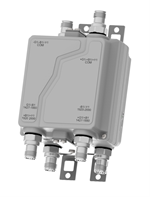Make use of the L-band to handle capacity challenges
DEC 16, 2021
|
Many persons nowadays spend several hours a day on their smartphones. Did you know that the average traffic has reached 8.5 GB/month per smartphone*? Five years ago this number was 1.9 GB/month*.
The streaming of video and other content has changed the traffic mix resulting in around 10x more traffic on the downlink than on the uplink in LTE networks. This puts operators under pressure to provide enough capacity to ensure a fast-loading, smooth user experience.
|
/girls-streaming-content-on-smartphones.jpg.aspx?width=200&height=190) |
To help achieve this, operators make use of Supplementary Downlink, an SW feature that enhances a network’s downlink capacity as well as the users’ experiences. Essentially, it gives significantly faster downloads.
Using Supplementary Downlink allows operators to avoid the costs of investing in additional base station and backhaul infrastructure - once the mobile broadband demand exceeds network capacity, networks can be easily expanded by deploying a 1.4 GHz Supplementary Downlink on existing base station sites.
|

|
For fast and cost-effective implementation of additional capacity, Kaelus has developed the dual-band combiner
KA-2000 that combines the 1427-1880 MHz and 1920-2690 MHz frequency bands.
It can be used either at the base station or the antenna end of the RF Feeder cables. Single and twin units are available.
|
View the technical specification »
*Source: Ericsson Mobility Report November 2021